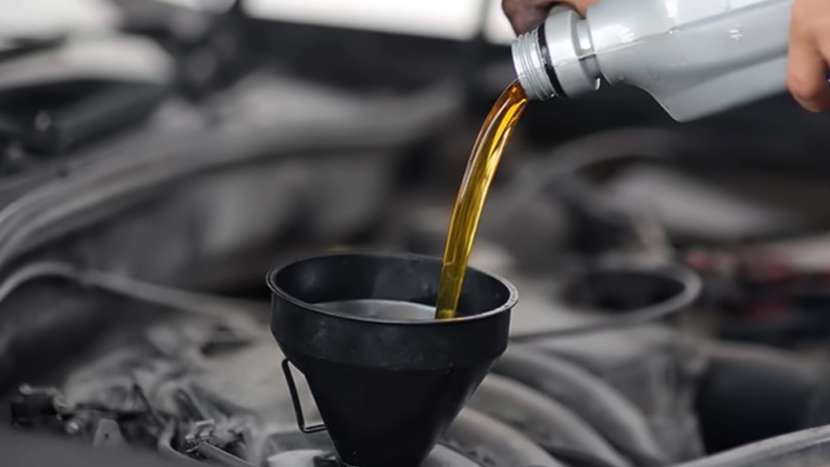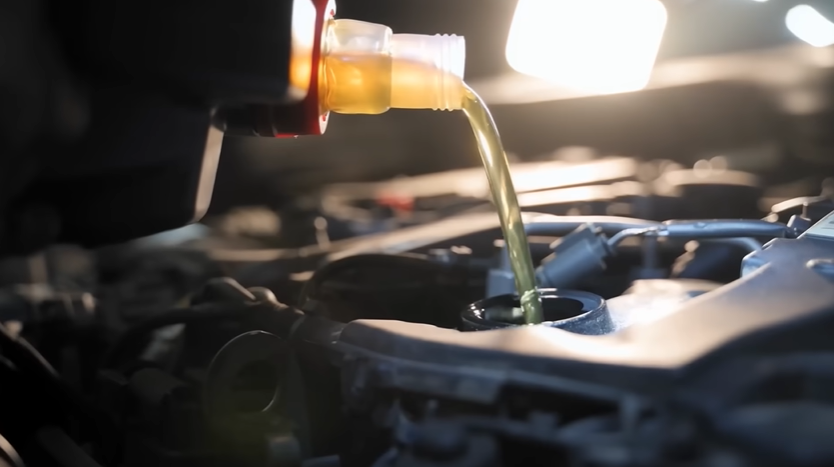If you notice that your oil dipstick has oil on it that looks like it’s been burned, this is most likely due to the engine running too hot. This can be caused by a variety of things, such as a faulty cooling system, low oil level, or dirty oil. If you notice burnt oil on your dipstick, it’s important to have your car checked out by a mechanic as soon as possible to avoid any serious damage to your engine.
If you’ve ever checked your oil level and seen a dark, burnt-looking substance on the dipstick, you may be wondering what it means. The short answer is that it’s not good news. Burnt oil on the dipstick usually indicates that there is an issue with the engine.
The most common cause of burnt oil is leaking seals or gaskets. When these components start to wear out, they can allow oil to seep into areas where it doesn’t belong. As the oil leaks, it will eventually start to burn off, leaving that telltale sign on the dipstick.
Another possible cause of burnt oil is excessive heat in the engine compartment. This can be caused by things like a faulty cooling system or even something as simple as driving in stop-and-go traffic on a hot day. If the engine gets too hot, it can start to break down the oil, causing it to turn black and smell bad.
Whatever the cause, burnt oil is something you want to take care of right away. If left unchecked, it can lead to bigger problems like decreased performance and fuel efficiency, increased emissions, and even engine damage. So if you see that dark stuff on your dipstick, make an appointment with your mechanic ASAP!
What Causes Burnt Oil on Dipstick?
If you notice that your oil dipstick has burnt oil on it, there are a few possible causes. First, it could be an indication that your engine is running too hot. This could be due to several reasons, such as a blocked radiator, low coolant levels, or a problem with the thermostat.
If this is the case, it’s important to have your car checked by a mechanic as soon as possible to prevent further damage. Another possibility is that the burnt oil on the dipstick is simply old oil that has been heated up and then cooled down again. This can happen if you drive for long periods without changing your oil, or if you frequently make short trips where the engine doesn’t have a chance to fully warm up.
In either case, the best solution is to change your oil according to the recommendations in your owner’s manual. If you’re still unsure what might be causing burnt oil on your dipstick, it’s always best to consult with a professional mechanic who can diagnose the problem and recommend the best course of action.
Is It Bad to Drive a Car That Burns Oil?
When it comes to your car, oil is one of the most important fluids. It helps keep your engine clean and running smoothly. But what happens when your car starts burning oil?
Is it bad for your car? The truth is, a little bit of oil burning is normal. Your engine will consume some oil as it operates.
However, if you notice that your car is consuming more oil than usual or that there’s a noticeable drop in your oil level, then you may have a problem. Excessive oil consumption can be caused by several things, such as worn piston rings, valves, or bearings. It can also be due to an issue with the PCV (positive crankcase ventilation) system.
If not addressed, excessive oil consumption can lead to serious engine damage. So if you think your car is burning too much oil, take it to a mechanic and have it checked out. It’s better to be safe than sorry!
How Do You Fix a Burning Oil in a Car?
If you’re dealing with a burning oil smell in your car, there are a few things you can do to try to fix the problem. First, check your oil level and make sure it’s full. If it’s low, topping it off may solve the issue.
You may also want to check for leaks and see if any oil is dripping onto hot engine parts, which could be causing the burning smell. If you can’t find the source of the leak or don’t have time to fix it right away, you can try adding a bit of oil treatment to your engine to help prevent burning smells in the future.
What Causes an Engine to Burn Oil?
An engine burns oil for a variety of reasons. The most common reason is that the oil has become too old and has lost its ability to lubricate the engine’s components. As the oil breaks down, it leaves behind deposits that can clog up an engine and cause it to overheat.
Another common cause of burning oil is leaks. If your engine is leaking oil, it will eventually run out of lubrication and start to burn. Oil burning can also be caused by worn piston rings or valves. Worn piston rings allow oil to leak past them into the combustion chamber where it gets burned along with the fuel.
Worn valves can also leak oil into the combustion chamber or allow it to get past the piston rings into the crankcase where it can get burned. If you’re noticing that your engine is burning oil, there are a few things you can do to fix the problem. First, check your oil level and add more if necessary.
You should also change your oil regularly to prevent it from breaking down and causing deposits in your engine. If you have an older car, you may want to consider replacing your piston rings or valves. This is a major repair but it may be necessary if you want to keep your car running well for years to come.
Do these TESTS when SMOKE comes out of the oil dipstick
Dried Oil on a Dipstick
If you’re a car owner, you’ve probably noticed that there’s a small amount of oil on the dipstick when you check your engine’s oil level. While this may seem like a minor issue, it can be an indication of a serious problem with your car. The oil on the dipstick is usually caused by a leaky seal or gasket in the engine.
This can allow oil to escape from the engine and get onto the dipstick. In some cases, the leak may be so bad that it results in low oil levels and can cause damage to your engine. If you notice dried oil on your dipstick, it’s important to have your car checked out by a mechanic as soon as possible.
They’ll be able to determine if there’s a problem with the seals or gaskets and make any necessary repairs. Ignoring the problem could result in more serious damage to your car down the road.
Brown Residue on Oil Dipstick
If you notice a brown residue on your oil dipstick, it’s most likely due to condensation. This can happen when the engine is cold and the oil is thick. The brown residue is harmless and will disappear once the engine warms up and the oil thinners out.
Oil Dipstick Stained
If you see oil on your dipstick, it’s a sign that your engine is leaking oil. The most common reason for an oil leak is a faulty gasket or seal. You’ll need to have the engine checked by a mechanic to determine the cause of the leak and get it repaired.
In the meantime, check your oil level regularly and top off as needed.
Crusty Oil on Dipstick
If you notice crusty oil on your dipstick, it’s likely due to a buildup of sludge and debris. This can happen if your engine isn’t getting enough clean oil, or if the oil isn’t being changed frequently enough. Over time, the sludge and debris will harden and form a crust on the dipstick.
If this happens, it’s important to clean off the crusty oil so that you can get an accurate reading of your oil level. To do this, simply wipe the dipstick with a clean cloth or paper towel. Once the crusty oil is gone, you’ll be able to see your true oil level and add more if needed.
Conclusion
If you notice burnt oil on your dipstick, it’s important to take action right away. Burnt oil can be caused by several factors, including over-filling the engine, using the wrong type of oil, or running the engine too hot. Left unchecked, burnt oil can damage your engine and lead to expensive repairs.
To avoid problems, check your oil level regularly and make sure you’re using the right type of oil for your car.



Leave a Reply